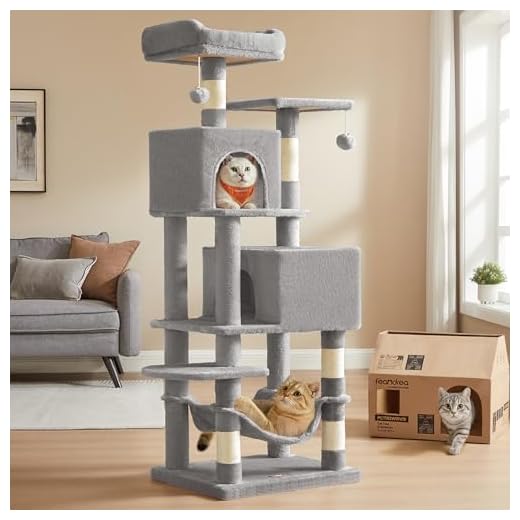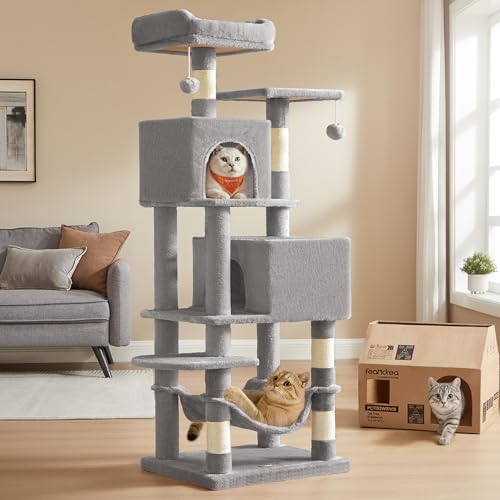

When I suddenly dash through the house at breakneck speed, it’s not just a random burst of energy. This behavior often signals that I need more stimulation. Engaging with toys that mimic prey, like feather wands or laser pointers, can channel my excitement into productive playtime.
Another reason for my erratic antics might stem from pent-up energy. Regular interactive sessions with my human, especially in the morning or evening, help in managing my activity levels. It’s essential for my well-being and keeps me happy and healthy.
If I’m darting around and making noise, it could also indicate that I’m feeling playful or even a bit feisty. Creating a stimulating environment with climbing structures or puzzle toys can satisfy my adventurous spirit and reduce those wild sprints.
Lastly, don’t overlook the influence of my surroundings. Sudden changes, like new furniture or unfamiliar scents, can spark my curiosity and lead to these impulsive escapades. Keeping my space familiar and comforting plays a significant role in my behavior.
Understanding Feline Energy Levels
To manage bursts of energy effectively, it’s important to recognize the natural activity patterns. Engaging in structured playtimes can help channel that exuberance. I’ve found that setting aside specific periods for interactive toys keeps the excitement focused and reduces unexpected frenzies.
| Activity Level | Recommended Playtime | Suggested Toys |
|---|---|---|
| Low | 10-15 minutes, twice a day | Soft toys, feather wands |
| Moderate | 20-30 minutes, once a day | Laser pointers, puzzle feeders |
| High | 30-60 minutes, multiple times a day | Chasing balls, interactive games |
Observing the time of day can also play a role. Many of us are more active during dawn and dusk, aligning with our instinctual hunting behaviors. Planning activities around these times can yield better engagement.
Recognizing signs of fatigue is crucial. If the playful antics seem excessive, a quiet spot with a cozy bed can provide a much-needed retreat. Monitoring hydration and diet supports overall energy management too; balanced nutrition keeps the pep in my step.
Social interaction influences energy. Engaging with humans or other pets can stimulate excitement. Scheduled playdates can be beneficial for a social butterfly like me, where I can share my zest for life.
Identifying Playful Behavior vs. Stress
If I’m zooming through the house with my tail high and my eyes wide, it’s likely just a playful burst of energy. Playtime often includes pouncing on imaginary prey or darting from one room to another. My body language is relaxed, with my ears forward and whiskers alert. Quick, short bursts of activity indicate I’m having fun, especially if I take breaks to engage with toys or interact with humans in between.
On the flip side, if my movements seem frantic and I’m hiding or frequently glancing over my shoulder, stress might be the culprit. Signs of anxiety include dilated pupils, flattened ears, or a low crouch. I may also vocalize more than usual, showing discomfort or unease. Creating a safe space where I can retreat to feel secure can help alleviate my stress. Pay attention to the environment; loud noises or unfamiliar visitors can trigger these reactions.
Recognizing Triggers
Identifying the difference between play and stress involves observing the context. If I suddenly stop mid-play and seem startled, it’s important to assess what interrupted my fun. A sudden loud sound or a new object in the room could be distressing. Conversely, if I’m playing with a feather toy and suddenly leap away, it’s likely just a spontaneous part of my play behavior.
Intervention Techniques
Providing a variety of toys and spaces for exploration can enhance my playful side while reducing stressors. If I’m stressed, a calming environment with quiet areas to retreat can make a difference. Interactive play sessions can also redirect my energy positively. Understanding these nuances helps maintain my happiness and well-being.
The Role of Age in Activity Levels
As an 8-year-old Scottish Fold, I’ve noticed how the energy fluctuations in my peers often correlate with their age. Kittens are bundles of energy, engaging in relentless play and exploration. They require ample stimulation to channel their enthusiasm productively. It’s typical for younger felines to dart about unpredictably, showcasing their agility and vigor.
As I aged, my own bursts of energy became less frequent. Adult cats generally display a more balanced demeanor, combining playfulness with longer rest periods. It’s essential to understand that while my youthful companions might seem like hyperactive little furballs, maturity often brings a calmer, more measured approach to activity.
Senior Companions
In contrast, older members of the feline community may experience a significant decline in their activity levels. Arthritis and other age-related issues can impact their ability to engage in vigorous activities. Recognizing these changes in our elders is crucial. Providing gentle exercises, like short play sessions or interactive toys, can help keep them engaged without overexerting themselves.
Tailoring Enrichment Activities
It’s essential to adapt playtime according to an individual’s age. For younger companions, introducing stimulating toys that encourage chasing and pouncing can be beneficial. For those in their senior years, consider puzzle feeders or gentle, interactive play that respects their physical limitations while still offering mental engagement. Understanding these nuances can help maintain a healthy balance of energy and rest, ensuring everyone enjoys their time together.
Environmental Factors Affecting Behavior
To enhance my daily antics, the surrounding environment plays a pivotal role. First and foremost, ensure there are sufficient vertical spaces like shelves or cat trees. Climbing opportunities stimulate exploration and exercise, which can channel excessive energy into productive play.
Noise levels significantly influence my state of mind. A calm ambiance promotes relaxation, while sudden sounds can trigger anxiety or excitement. Soft music or white noise can create a soothing atmosphere, helping to mitigate any stressors from outside.
Lighting and Space
Proper lighting affects mood and activity. Natural light encourages alertness, while dim environments often lead to lethargy. Arrange my play area near windows or use soft artificial lighting to create a cheerful atmosphere.
Social Interactions
Engagement with humans and other pets is crucial. Too much solitude can lead to boredom, prompting frenetic behavior. Schedule regular play sessions and consider introducing toys that encourage interaction, like laser pointers or feather wands. For tips on enhancing your cooking skills, check out how to cook peppers in cast iron skillet.
Importance of Regular Playtime
Engaging in frequent play sessions is key for maintaining my energy levels and overall health. Without it, I can become bored and display unwanted behaviors. Here’s why play is so significant:
- Physical Fitness: Regular activity helps keep my weight in check and strengthens my muscles. A few interactive toys can make a huge difference.
- Mental Stimulation: Variety in playtime prevents cognitive decline. Puzzle toys and games that mimic hunting engage my brain.
- Bonding Time: Play is an excellent opportunity for my human to connect with me. It builds trust and enhances our relationship.
- Behavioral Regulation: Regular outlets for energy help minimize destructive tendencies. Channeling excitement appropriately is crucial.
Recommended Play Activities
Here are some activities that keep me entertained:
- Feather wands for interactive play.
- Laser pointers for chase games.
- Ball toys for batting and chasing.
- Puzzle feeders to stimulate my mind during meal times.
Keeping things fresh is important. Rotate toys and introduce new ones to maintain interest. Also, consider my dietary needs; quality nutrition plays a role in my energy levels, so check out the best hairball food for cats.
When to Consult a Veterinarian About Behavior
If you notice sudden and extreme shifts in my actions, it’s time to seek professional advice. Signs like excessive aggression, hiding for prolonged periods, or persistent vocalization can indicate underlying health issues. Disregarding these changes may lead to further complications.
Pay attention to any unusual habits, such as frequent scratching or obsessive grooming. These behaviors might suggest stress or discomfort. If I stop eating or drinking altogether, a vet’s consultation is necessary to rule out serious conditions.
Monitor my litter box habits closely. Changes in elimination patterns, such as straining or blood in urine, require immediate veterinary attention. Additionally, if my energy levels fluctuate significantly, it’s prudent to check in with a healthcare provider.
Regular check-ups are beneficial, even when everything seems fine. Maintaining open communication with a veterinarian helps ensure my well-being and addresses any concerns before they escalate.








